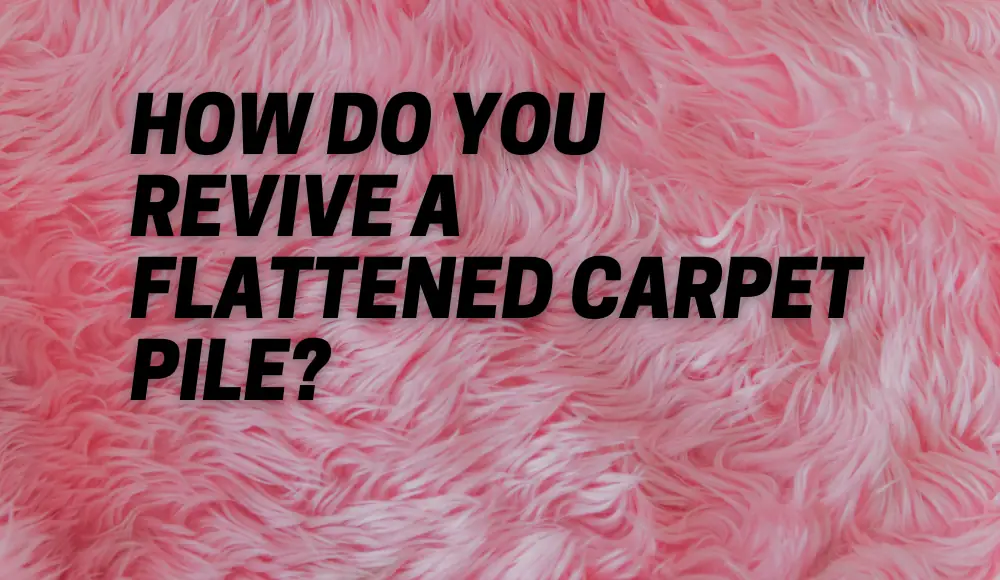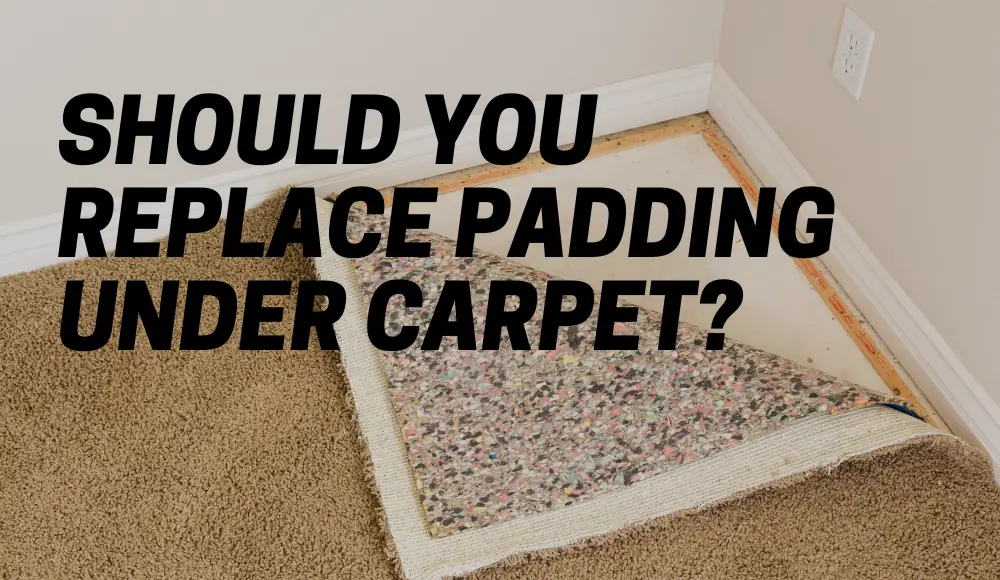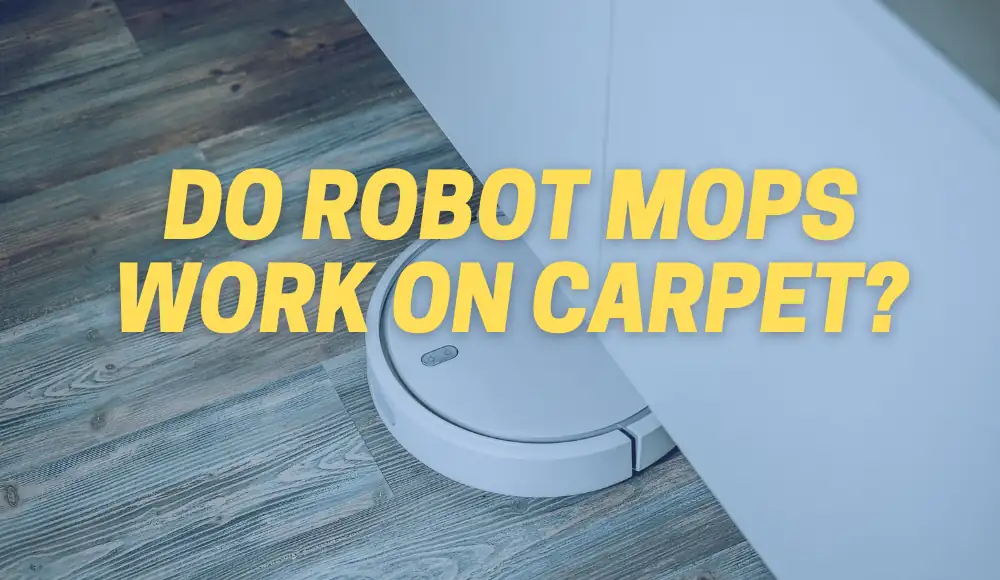Last updated on February 20th, 2025 at 04:12 am
In this guide, we will delve into the nuances of fixing carpet wicking, exploring its causes, identification methods, diverse solutions, preventive measures, and the potential impact of different carpet types. Understanding carpet wicking issues is crucial for maintaining the aesthetics and longevity of your carpet.
What is Carpet Wicking and Why Does It Happen?
Carpet wicking after cleaning
Carpet wicking occurs when a spill or stain is only superficially cleaned, leaving residues deep within the carpet fibers. As the carpet dries, these residues can wick upward, causing the original stain to resurface, hence the term “wicking.”
This phenomenon is primarily due to the capillary action, where liquid rises through the fibers via their tiny channels.
—
Causes of Wicking
Wicking commonly arises from improper or insufficient cleaning after spills, especially when the spill penetrates the carpet deeply. Also, using excessive cleaning agents or water during spot cleaning can contribute to wicking.
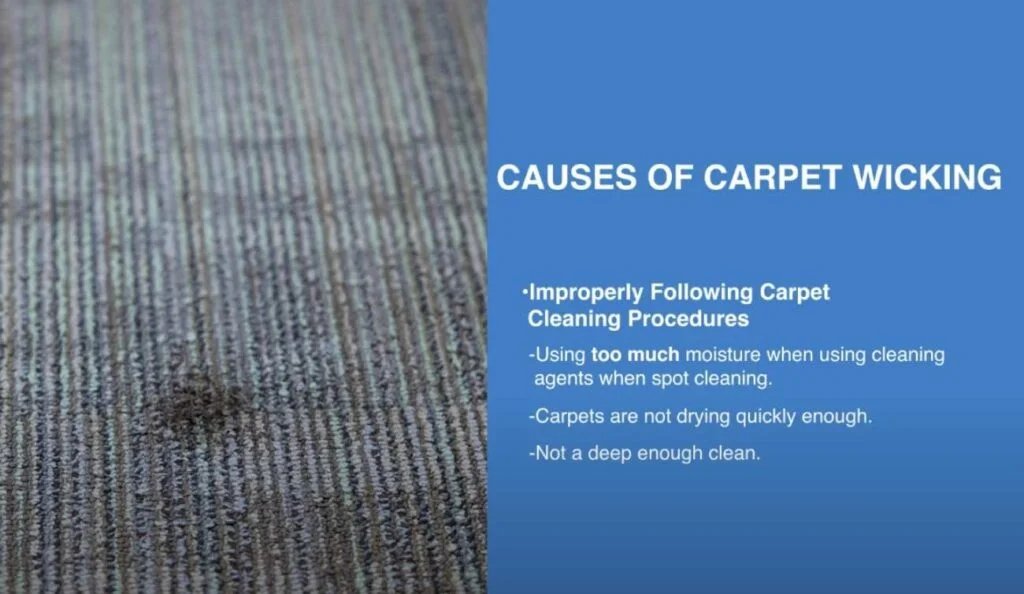
How to Identify Carpet Wicking?
Distinguishing wicking from regular staining or wear is essential. Wicking often presents itself as a ring or discoloration around the previously cleaned stain. The affected area might feel damp or slightly sticky when touched, and the original stain can reappear as the carpet dries.
Signs of Wicking:
- Recurring stains after cleaning
- Discoloration or ring formation
- Dampness in the affected area
What are the Best Methods of Removing Carpet Wicking Stains?
1. Blotting and Drying:
- Blot the affected area gently with an absorbent cloth.
- Utilize a fan or a hairdryer on a low setting to expedite the drying process.
2. Using Vinegar Solution:
- Create a solution of vinegar and water (1:1 ratio).
- Blot the stained area with this solution, followed by blotting with a dry cloth.
3. Carpet Cleaning Products:
- Opt for specially formulated carpet cleaning solutions.
- Follow the manufacturer’s instructions for effective results.
4. Professional Steam Cleaning:
- Engage professional services for deep steam cleaning to extract deep-seated residues.
Table: Comparison of Methods for Fixing Carpet Wicking
| Method | Effectiveness | Convenience | Cost |
|---|---|---|---|
| Blotting and Drying | Moderate | High | Low |
| Vinegar Solution | High | Moderate | Low |
| Carpet Cleaning Prods | High | Moderate | Varies |
| Professional Cleaning | Very High | Low | Moderate-High |
Time needed: 30 minutes
How to Fix Carpet Wicking at Home
DIY approaches can be effective for minor cases of carpet wicking. Vinegar, known for its cleaning properties, can be an excellent home remedy for wicking. The acetic acid in vinegar helps break down residues and effectively cleans the affected area.
- Blot and Absorb:
Use a clean, dry, white cloth or paper towel to blot the affected area. Apply pressure to absorb as much moisture as possible. Repeat until the cloth doesn’t pick up more liquid.
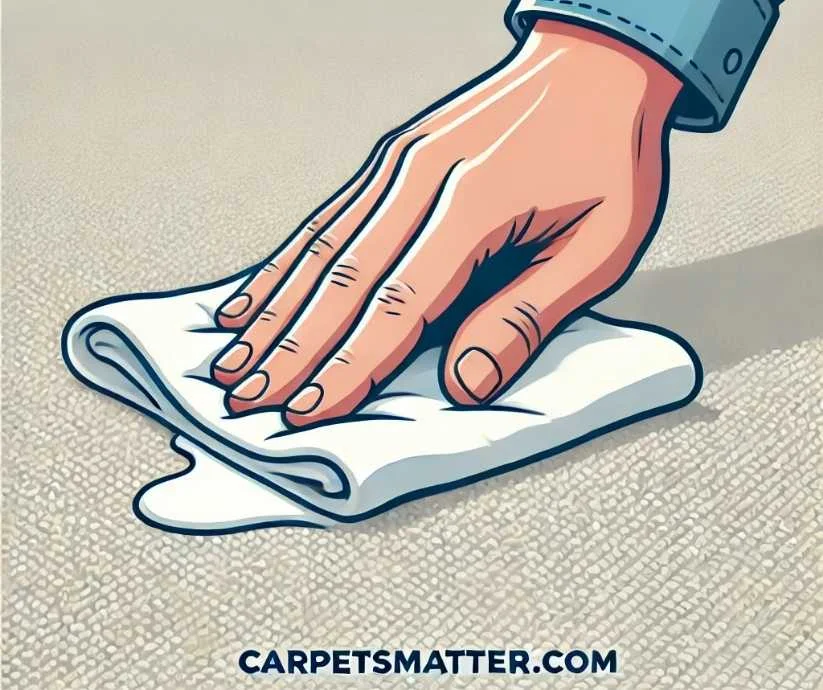
- Drying:
Speed up the drying process by using fans or opening windows to increase airflow. A dehumidifier can also help by pulling excess moisture from the air.
- Avoid Heat:
Avoid using heat to dry the area (like hair dryers or direct sunlight), as this might set the stain and make it more difficult to remove.
- Vinegar for Carpet Wicking:
Create a solution of equal parts white vinegar and water. Test this on an inconspicuous area of the carpet to ensure it doesn’t cause damage. If it’s safe, dab the affected area with the solution using a clean cloth. Blot, don’t rub, to prevent spreading the stain.
- Baking Soda Paste:
For odors, you can mix baking soda with a small amount of water to create a paste. Apply this to the affected area and let it sit for several hours, then vacuum it up.
- Commercial Carpet Cleaner:
If the stain persists, you might want to try a commercial carpet cleaner or stain remover. Follow the manufacturer’s instructions and test it on a small, inconspicuous area first.
- Professional Cleaning:
If the above steps don’t work, consider professional cleaning. Professional carpet cleaners have the expertise and equipment to treat these issues effectively.
- Prevent Future Wicking:
After cleaning the affected area, it’s important to prevent wicking from happening again. Ensure thorough drying after any cleaning process and try to avoid over-wetting the carpet during future cleanings.
User Advice: How to Fix Carpet Wicking
The Reddit community insight often provides valuable tips:
| Discussion Point | Key Details |
|---|---|
| Wicking Definition | Wicking is the upward migration of water-soluble materials on carpet fibers during drying, causing recurring spots and stains. It’s associated with incomplete soil removal. |
| Addressing Wicking | After cleaning, allowing the carpet to dry thoroughly for 48 hours is recommended. Vacuum the area from multiple directions, mist with deionized water or hydrogen peroxide, gently blot, and repeat if needed until the appearance improves. |
| Preventing Wicking | To prevent wicking, low moisture cleaning methods, using a glided wand, employing air movers, opening windows, and using hydrogen peroxide-based detergent during cleaning can help. |
| Professional Insights | Wicking is more likely to occur in entry and high-traffic areas, often due to over-cleaning or over-saturation by DIY homeowners or inexperienced technicians. |
| Additional Suggestions | Techniques such as post-bonnet cleaning with hydrogen peroxide-based detergent or applying an anti-browning treatment can help correct brownish appearances caused by wicking. |
| Misconceptions | Wicking may not only be due to overwetting but also due to incomplete soil removal. Some stains may reappear due to residues from DIY spot cleaning. |
| Care Tips & Concerns | Suggestions for care tips might include more solutions for correction, and the availability of deionized water for home users. |
| Deionized Water | Deionized water is available in grocery and drug stores and is commonly used in irons. There’s a distinction between deionized and distilled water. |
| Fixing Overwetting Issues | Overwetting or using excess chemical during cleaning might lead to wicking. Resolving this might involve using dry towels and books to absorb excess moisture or using fiber rinse on the affected area. |
| Professional Perspectives | The consensus is that wicking is often a result of overwetting or incomplete soil removal, and it can be the customer’s issue due to prior spot cleaning residues. |
| Acid Rinse and Wicking | There’s debate about whether using an acid rinse can prevent wicking, with some suggesting it as a solution and others questioning its effectiveness. |
- Blot, Don’t Rub: Vigorous rubbing can spread the stain and worsen wicking.
- Test in Small Areas: Before using any cleaning solution, test it on a small inconspicuous area to ensure it doesn’t discolor the carpet.
When Should I Seek Professional Help for Carpet Wicking?
For extensive or persistent wicking issues, professional intervention is advisable. If home remedies fail to yield satisfactory results or if the wicking problem extends to a large area, professional carpet cleaners equipped with specialized tools can effectively address the issue.
Common Mistakes to Avoid When Fixing Carpet Wicking
Avoid these common errors:
- Using Excessive Water: Overwetting the carpet exacerbates wicking.
- Ignoring Manufacturer Instructions: Incorrect use of cleaning agents might damage the carpet.
Does the Type of Carpet Affect Wicking?
Certain carpet types, especially those with natural fibers, are more susceptible to wicking. Materials like wool or cotton can retain more moisture, making them prone to wicking. However, prompt and appropriate cleaning methods can mitigate this issue.
Can Wicking Lead to Other Carpet Issues?
Untreated wicking can lead to mold or mildew growth, which can severely damage both the carpet and the floor beneath it. Moreover, persistent wicking can degrade the carpet fibers, affecting its overall lifespan.
- Staining: Wicking often results in recurring spots and stains. As the moisture rises to the surface, it brings dissolved materials from deeper carpet layers, causing visible staining. If not addressed, these stains can become more pronounced and harder to remove over time.
- Mold and Mildew: Excessive moisture trapped in the carpet due to wicking can create a conducive environment for mold and mildew growth. This can lead to health issues and a musty odor in the affected area.
- Residue Buildup: Wicking might be indicative of incomplete soil removal. Residues left behind from cleaning agents or DIY spot treatments can attract more dirt, leading to a buildup of residues in the carpet fibers.
- Browning or Discoloration: The process of wicking can sometimes cause browning or discoloration in the affected areas. This can be a result of various factors, including chemical reactions, dirt accumulation, or the presence of cellulose in the carpet fibers.
- Carpet Deterioration: Prolonged exposure to excess moisture, if left unresolved, might affect the integrity of the carpet fibers, padding, or backing, potentially leading to deterioration over time. This can result in weakened carpet structure and reduced lifespan.
- Odor Issues: Moisture trapped in the carpet due to wicking can lead to unpleasant odors as a result of mold and mildew growth. These odors can persist and become challenging to eliminate.
Using proper cleaning techniques, ensuring thorough drying, and potentially seeking professional assistance can help mitigate the problems associated with wicking and prevent further complications in the long run.
How Long Does It Typically Take to Fix Carpet Wicking?
The time to rectify wicking varies based on the method employed and the severity of the issue. Minor instances might resolve in a few hours, while more stubborn cases might take a day or two to show complete improvement.
In conclusion, addressing carpet wicking promptly and correctly is pivotal to maintaining a pristine carpet. By following preventive measures, employing effective cleaning techniques, and understanding the intricacies of various carpet types, one can efficiently manage and mitigate the recurring nuisance of wicking.
Remember, a well-informed approach combined with prompt action is the key to preserving the allure of your carpets.
Authority Source: IICRC – Institute of Inspection, Cleaning and Restoration Certification
Note: Ensure to test any cleaning method on a small inconspicuous area before widespread application to avoid potential damage to the carpet.
Conclusion and Key Points
Carpet wicking is when moisture and cleaning agents cause embedded dirt to rise from the carpet backing to the surface during drying.
Main causes:
- Excessive use of moisture or cleaning agents during spot cleaning
- Slow carpet drying time
- Inadequate deep cleaning that leaves soil embedded beneath fibers
Prevention methods:
- Clean spills immediately by blotting them with an absorbent cloth
- Use proper cleaning agents and thorough rinsing
- Remove moisture with a spotting machine or wet/dry vac
- Use air dryers to speed up drying
- Employ low moisture cleaning methods like encapsulation cleaning
- Vacuum high-traffic areas twice weekly to prevent soil buildup
Remember: Carpets are designed to hide soil, so when liquids hit the surface, they settle into the backing and spread. Quick response to spills and proper cleaning techniques are essential to prevent wicking.
